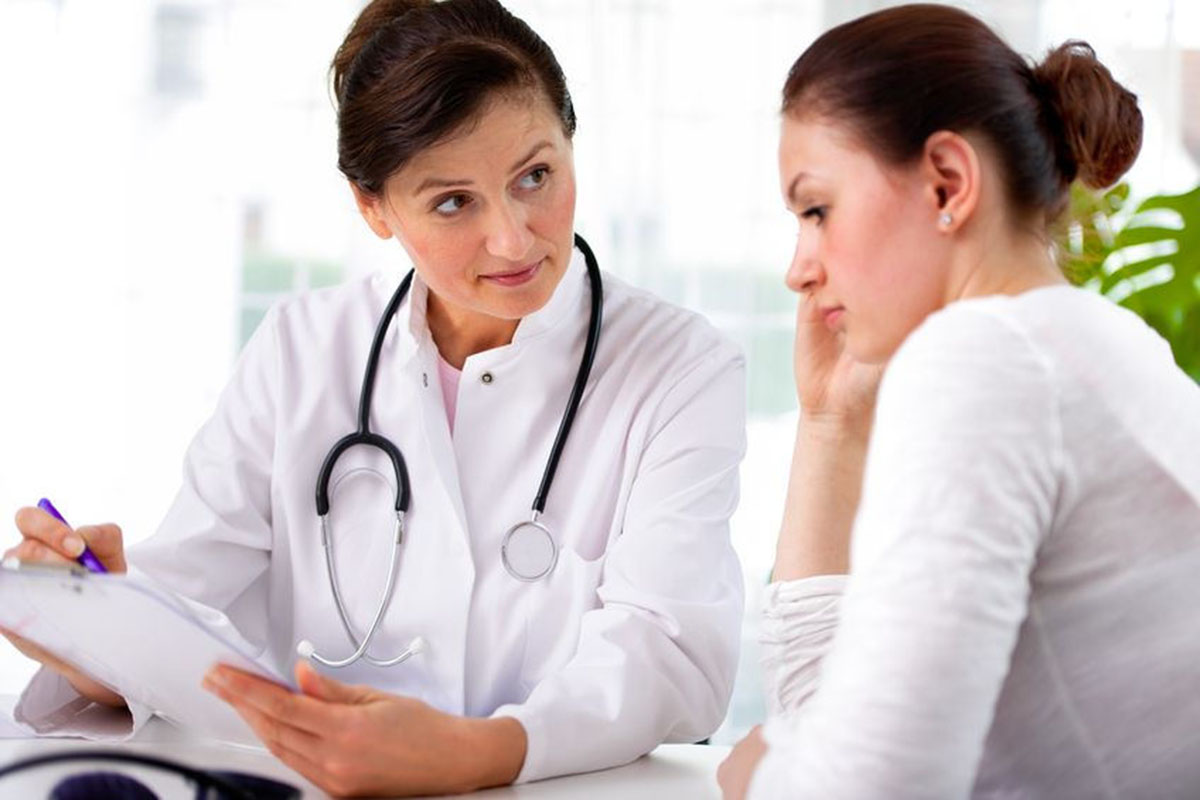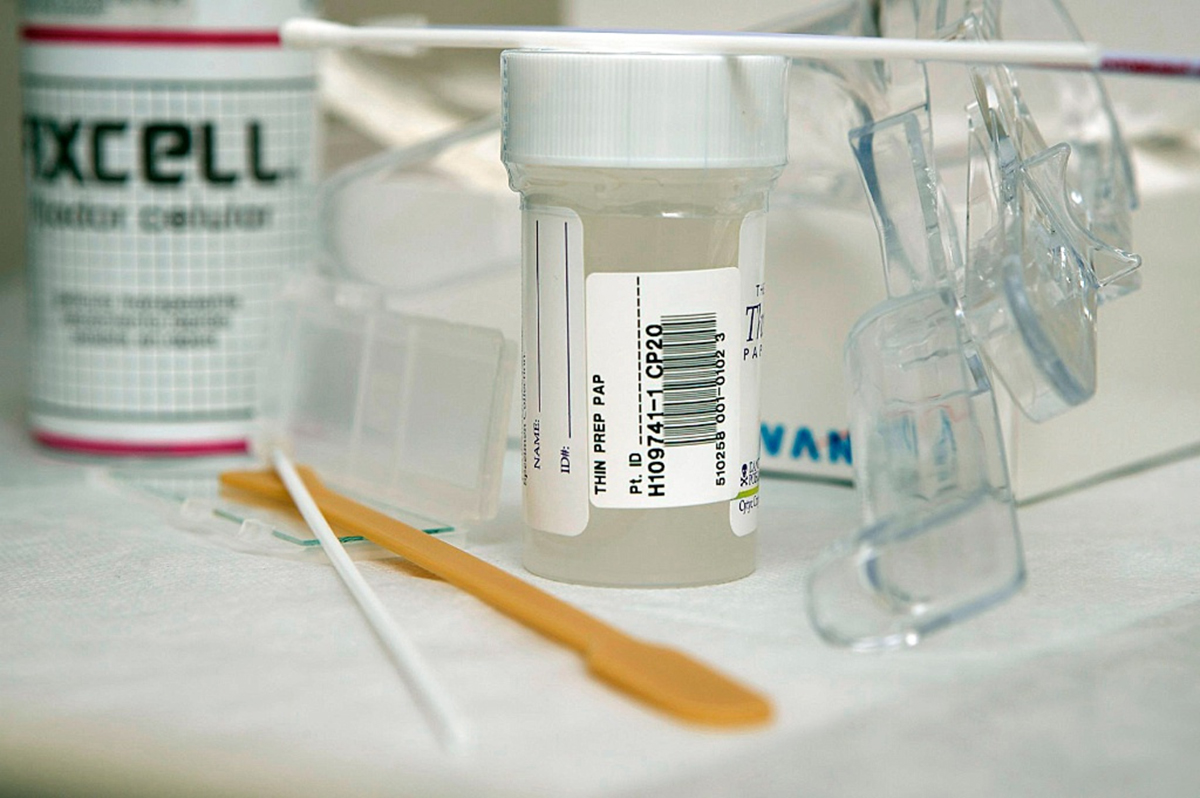Ovarian cancer is a devastating disease because it is usually detected late, but ovarian and other women's cancers are often recognized by the women who have them even before they go to the doctor. Here are some of the symptoms you need to know.
Breast cancer is a leading cause of death of women in both the US and the UK, with ovarian, uterine, cervical, vulvar, vaginal, and cervical cancers almost as common. These cancers are treatable if they are caught early, but devastating if they are not.
Researchers in the UK, where women usually fare more poorly with gynecological cancers than in the US, believe that the reason some women do not survive cancer is that they dismiss symptoms that should send them to their doctors.

Women's Reproductive Cancers Tend To Present Vague Symptoms
Some kinds of cancer give clear signals it is time to see the doctor. When a mole changes color from flesh-toned to black and begins to bleed, most people will make an appointment to see the doctor about it. When a growing brain tumor begins to cause dizziness, forgetfulness,, and excruciating headaches, most people seek relief.
The early stages of women's cancers, however, present symptoms that can be attached to many other conditions, that come and go, and that sometimes seem "not all that bad".
What Are Some Of The Early Symptoms Of Gynecologic Cancers?
A common symptom of vaginal and vulvar cancers is itching. As cells in the outermost membranes lining the vagina or vulva begin to become cancerous, they often also become dry and itchy. The usefulness of itch as an early symptom of cancer, however, is severely limited by the fact it can be caused by many other conditions. Vaginal dryness caused by menopause can result in itch. Yeast infections can result in itch. Using the wrong feminine hygiene product can result in itch. Even though itchiness, redness, and light swelling might be symptoms that should be taken to the doctor, most women will not seek help for them.
Bleeding is another early sign of uterine, cervical, and some ovarian cancers. Bleeding, however, is a monthly occurrence with menstruation, and most women of reproductive age have occasional irregularities with their periods. A menstrual cycle might be 21 days or 35 days long instead of 28. Women tend not to take unexpected changes in the length of their cycles as a serious sign of illness, although bleeding after menopause usually results in a visit to the physician.
Lumps and bumps are also regarded ambivalently. Women who have uterine fibroids or fibrocystic disease tend to have lumps and bumps that grow during the first part of their periods (when their bodies are making more estrogen, which stimulates tissue growth) and shrink during the second part of their periods (when their bodies are making more progesterone, which stops the growth cycle until it starts up again with the next menstrual cycle).
Only if a lump or bump persists throughout a menstrual cycle, or appears after menopause, will women usually see their doctors. Even then, there are usually reservations.
Choosing The Right Doctor Is Essential
Many women don't feel comfortable discussing their reproductive health with male doctors. Discussing women's health with a female doctor usually makes a difference. A doctor who is empathetic and patient, who does not minimize "odd" symptoms or "minor" symptoms is a must for good results.
Which Gynecological Symptoms Should Women Take to Their Doctors?
Sometimes the question women need to consider isn't "Which symptoms do I have?" but "How many symptoms do I have?" Cancers in their early stages often produce a variety of symptoms that can also be linked to many other diseases, but in larger numbers.
Other conditions produce the same symptoms, but not as many symptoms.

The more symptoms women have on this list, the more likely it is urgent that they see their doctors for a thorough examination.
- Pain in the midsection, also known as Mittelschmerz. The pain some women experience when they ovulate, when they aren't ovulating, is one of many symptoms of ovarian tumors or ovarian cancers in their early stages.
- Premenstrual and perimenstrual symptoms that occur at other times of the month are a sign something else is wrong. Headaches, bloating, gassiness, diarrhea, abdominal pain (especialy in the middle of the abdomen), swelling, and difficulty with emotions that clearly aren't PMS may indicate other problems.
- Bumps and lumps in the breasts or uterus are more likely to be fibrocystic disease than cancer, and fibrocystic disease usually does not become cancer. However, bumps and lumps caused by fibrocystic disease are responsive to estrogen, the more estrogen in the body, the more prominent and painful the growth. Bumps and lumps that don't swell and shrink are more likely to be a sign of cancer.
- Bleeding between periods doesn't "just happen". Unless there is a clear reason for the bleeding (usually connected with sexual intercourse), bleeding between periods is usually a symptom that needs to be brought to the attention of the doctor.
- Symptoms that are getting worse are a cue to see the doctor. Symptoms that a family member had before diagnosis with cancer are a reason to see the doctor. Symptoms that make you nervous are a reason to see the doctor.,
While it is useful to consider other women's lay advice on symptoms, some kinds of advice are usually suspect. If you have bleeding, and a friend tells you, "Oh, you just need to take out your IUD," that may not be adequate. If you have a long list of symptoms and a friend tells you "It's easy, just eat more roughage, and take vitamin C," chances are you need to do more than that. Friends who have been through a cancer scare, or who have been through and gone into remission from cancer, probably will give you the best friendly advice, but don't let any well-intentioned friend's advice subsitute for a doctor's advice.
About one in eight women in the US and one in nine women in the UK eventually develops breast, uterine, ovarian, vaginal, cervical, or vulvar cancer.
About one in four women who is diagnosed with cancer will somehow manage to survive the disease almost no matter what; experts estimate that about one out of fifty women is simply not going to die of the disease even if the best treatment is not avaiable. You could be that rare woman who is going to make it without timely help. But there are 49 chances out of 50 that your best bet for survival is timely medical treatment.
Find the right doctor, if you are in the US, choose the right insuirance (a PPO rather than an HMO if you can afford it), and get the treatment you need.
- Low EL, Waller J, et al. Women's interpreation of and responses to potential gynaecological cancer symptoms: a qualitative interview study. BMJ Open 2015, 5:e008082.
- Photo courtesy of www.ilmicrofono .it via Flickr: www.flickr.com/photos/115089924@N02/16256199615
- Photo courtesy of PAHO/WHO via Flickr: www.flickr.com/photos/pahowho/9401187761
- scienceblog.cancerresearchuk.org/2015/02/16/cancer-screening-the-difference-between-what-people-say-and-what-they-do/
- m.activebeat.co/your-health/women/10-warning-signs-of-ovarian-cancer/?utm_medium=cpc&utm_source=bing&utm_campaign=AB_BNG_US_DESK&utm_content=search&utm_term=symptoms%20ovarian%20cancer


Your thoughts on this